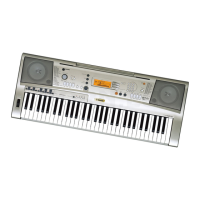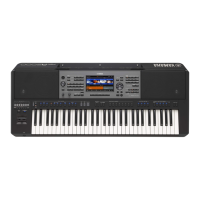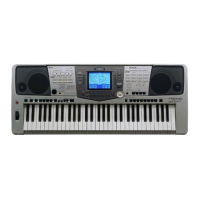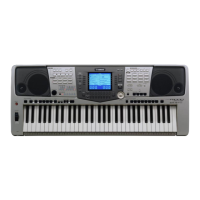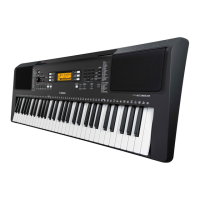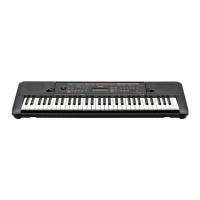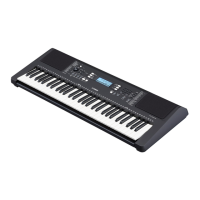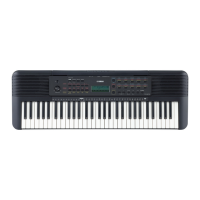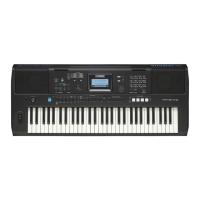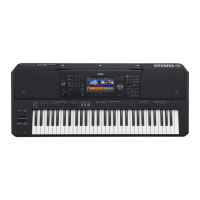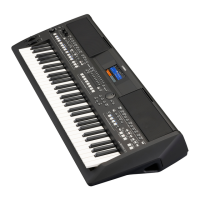196 PSR-A3000 Owner’s Manual
MIDI System Settings
The explanations here apply to the SYSTEM page in step 4 on page 194.
Use the [A]/[B] buttons to select the parameters (below), then set the ON/OFF status, etc. by using the [1 ]–
[8 ] buttons.
1 Local Control
Turns the Local Control for each part on or off. When Local Control is set to “ON,” the keyboard of the instrument
controls its own (local) internal tone generator, allowing the internal Voices to be played directly from the keyboard.
If you set Local to “OFF,” the keyboard and controllers are internally disconnected from the instrument’s tone
generator section so that no sound is output when you play the keyboard or use the controllers. For example, this
allows you to use an external MIDI sequencer to play the instrument’s internal Voices, and use the instrument
keyboard to record notes to the external sequencer and/or play an external tone generator.
2 Clock setting, etc.
CLOCK
Determines whether the instrument is controlled by its own internal clock or a MIDI clock signal received from
an external device. INTERNAL is the normal Clock setting when the instrument is being used alone or as a
master keyboard to control external devices. If you are using the instrument with an external sequencer, MIDI
computer, or other MIDI device, and you want to synchronize it to that device, set this parameter to the
appropriate setting: MIDI, USB 1, or USB 2. In this case, make sure that the external device is connected
properly (e.g., to the instrument’s MIDI IN terminal), and that it is properly transmitting a MIDI clock signal.
NOTE When CLOCK is set to a value other than INTERNAL, the tempo is indicated as “Ext.” on the Main display. This means that playback of this instrument is con-
trolled only from an external MIDI device or computer. In this condition, Styles, Songs, Multi Pads or the Metronome cannot be played back even if you carry
out the start operation.
NOTE When a USB wireless LAN adaptor is connected to the [USB TO DEVICE] terminal, the “WIRELESS LAN” parameter can also be selected.
TRANSMIT CLOCK
Turns MIDI clock (F8) transmission on or off. When set to OFF, no MIDI clock or Start/Stop data is
transmitted even if a Song or Style is played back.
RECEIVE TRANSPOSE
Determines whether or not the instrument’s transpose setting is applied to the note events received by the
instrument via MIDI.
START/STOP
Determines whether incoming FA (start) and FC (stop) messages affect Song or Style playback.
3 MESSAGE SW (Message Switch)
SYS/EX.
The “Tx” setting turns MIDI transmission of MIDI System Exclusive messages on or off. The “Rx” setting
turns MIDI reception and recognition of MIDI System Exclusive messages generated by external equipment
on or off.
CHORD SYS/EX.
The “Tx” setting turns MIDI transmission of MIDI chord exclusive data (chord detect. root and type) on or off.
The “Rx” setting turns MIDI reception and recognition of MIDI chord exclusive data generated by external
equipment on or off.
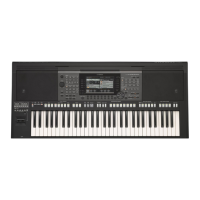
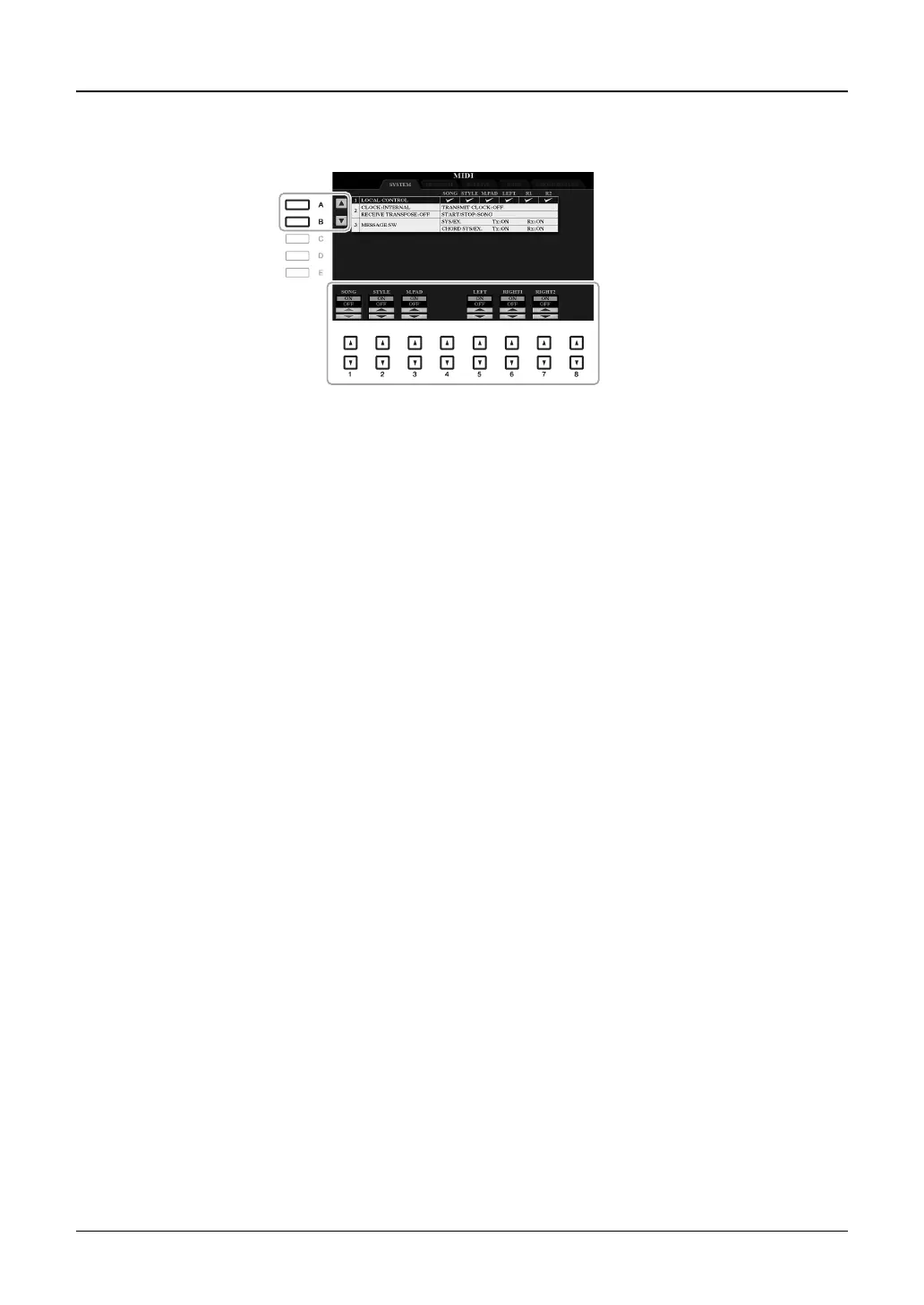